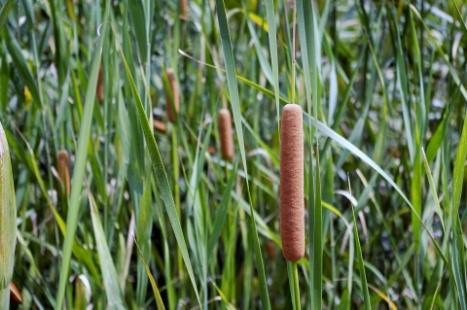- Prepped & Ready™
- Posts
- 🌱 Edible Plants: Identifying and Harvesting Wild Foods for Survival
🌱 Edible Plants: Identifying and Harvesting Wild Foods for Survival

 | ❓Trivia Question❓ |
Greetings, Wilderness Explorers!
In today's newsletter, we're venturing into the wild world of edible plants and emergency water sources. Join us as we unlock the secrets of nature's pantry and discover how to forage for food and find water in the most unexpected places!
🌿 Here are some tips to start:
🔍 Tip #1: Safety First: Before you start foraging, it's crucial to familiarize yourself with local flora and fauna. Invest in a reliable field guide or take a foraging class to learn to identify edible plants safely and confidently.
🌿 Tip #2: Start with the Basics: Begin your foraging journey by learning to identify a few common edible plants in your area. Start with plants like dandelions, wild strawberries, and stinging nettles, which are plentiful and easy to recognize.
🥗Tip #3: Harvest Responsibly: When harvesting wild plants, practice sustainable foraging techniques to ensure the health and longevity of natural ecosystems. Only take what you need, and be mindful of endangered or protected species.
🍃 Tip #4: Know Your Seasons: Different plants are available at different times of the year, so pay attention to seasonal variations in plant growth and availability. Spring and early summer are prime foraging seasons, offering a bounty of fresh greens and herbs.
🍄Tip #5: Beware of Look-Alikes: While many wild plants are edible and nutritious, some have poisonous doppelgangers that can be harmful or even fatal if ingested. Always double-check your identification and consult multiple sources before consuming any wild plant
🤓WATCH AND LEARN🤓
🤣 Joke of the Day🤣
Why did the mushroom go to the party?
Because he was a fun-gi to be around! 🍄
📚 Further Reading📚
These articles offer a wealth of information on identifying, foraging, and utilizing edible wild plants for survival, emphasizing the significance of caution and knowledge when harvesting wild foods.
👂 LISTEN TO THIS👂
Food Security - The Science Behind Your Salad
We are currently facing significant challenges to our food supply. A global pandemic, a war on the ground in the breadbasket of Europe, a volatile climate, plus a growing population, have all led us to a pinch point. In this episode of The Science Behind Your Salad, we examine the threats to our food supply and explore the possible solutions, innovations, and approaches that could keep the ever-growing number of hungry mouths fed. |  |
🗺️ Did You Know?🗺️
Our ancestors relied on wild plants for nourishment long before supermarkets existed. Today, the knowledge of edible plants can be a lifesaver in emergencies or when exploring the great outdoors. |  |
🌿More Edible Plants Tips🌿
1. Start Small: 🌿Begin your foraging journey by focusing on a few easily identifiable plants. Build your knowledge gradually to avoid overwhelming yourself.
2. Location, Location, Location: 🌿Different plants thrive in different environments. Learn to recognize the habitats where edible plants are most likely to grow, such as forests, meadows, or along waterways.
3. Look for Signatures: 🌿Some plants have distinctive features that make them easy to identify. Look for characteristics like leaf shape, color, smell, and growth patterns to help you narrow down your options.
4. Tread Lightly: 🌿When foraging, practice Leave No Trace principles to minimize your impact on the environment. Avoid trampling delicate plants and be respectful of wildlife habitats.
5. Try Before You Buy: 🌿Before consuming any wild plant, it's essential to positively identify it and verify its edibility. Use multiple reputable sources, such as field guides and foraging apps, to cross-reference your findings.
6. Test for Sensitivity: 🌿Some people may have allergic reactions or sensitivities to certain plants, even if they are generally considered edible. Always start with a small portion and wait 24 hours to monitor for adverse reactions.
7. Harvest Ethically: 🌿Only harvest plants from areas where it is legal and ethical to do so. Respect private property rights, avoid protected areas, and obtain permission from landowners when necessary.
8. Be a Good Steward: 🌿Consider the sustainability of your foraging practices and the long-term health of wild plant populations. Take only what you need, and leave enough behind to ensure the plants can continue to thrive and reproduce.
9. Seasonal Awareness: 🌿Be mindful of seasonal variations in plant growth and availability. Certain plants may be more abundant or flavorful during specific times of the year, so plan your foraging outings accordingly.
10. Document and Share: 🌿Keep a foraging journal or take photos of the plants you encounter. Not only does this help reinforce your knowledge, but it also allows you to share your discoveries with others and contribute to the foraging community.
🌐 Visit Our Website 🌐
Ready to learn more about rainwater harvesting? Head over to our website Prepped-and-Ready.com for in-depth guides, product recommendations, and community discussions. Let's make every drop count together!
With these tips and tricks, you'll be well-equipped to forage for survival and enjoy the abundance of wild foods that nature has to offer. Remember to always forage responsibly, respecting the environment and its inhabitants. Happy hunting!
If you have any questions or want to share your own foraging experiences, don't hesitate to reach out. Let's continue to learn and grow together as a community of nature enthusiasts and survivalists.
🌱 P.S. Share your foraging adventures with us on social media using #WildEdibles or Reply to this email! We can't wait to see what tasty treasures you discover in the wilderness.
Wishing you happy foraging and bountiful harvests!
Prepped and Ready Team


